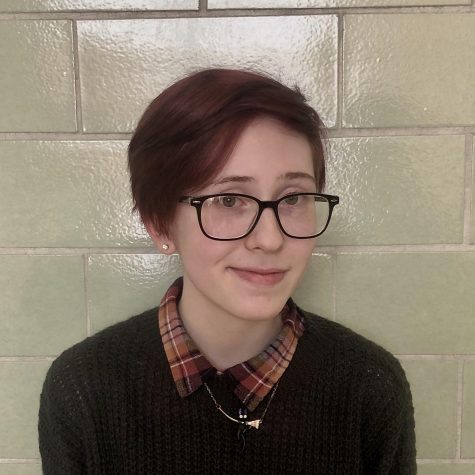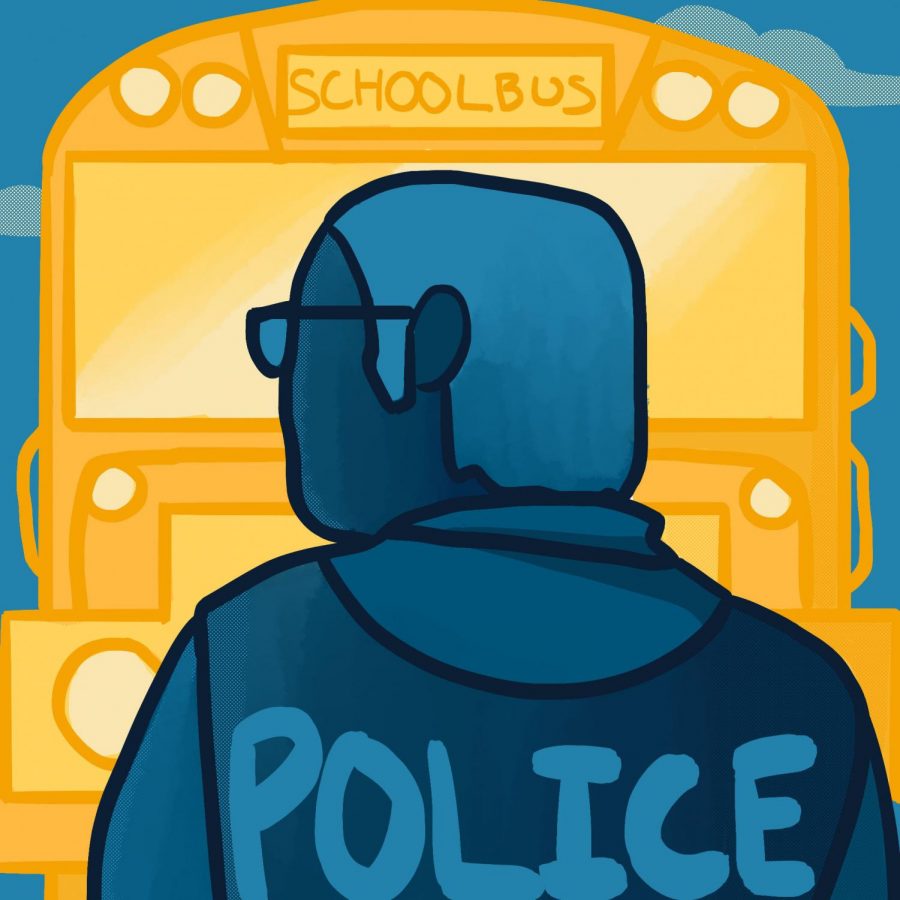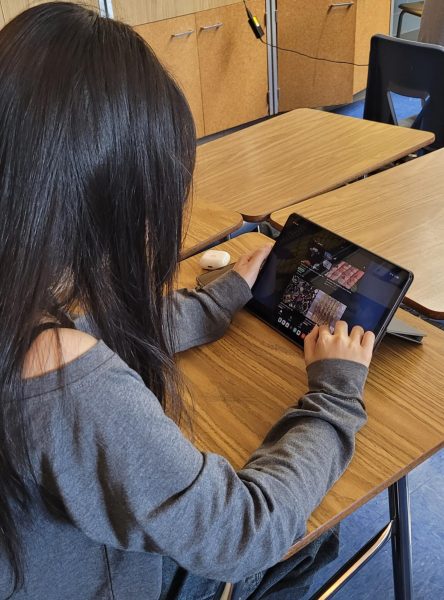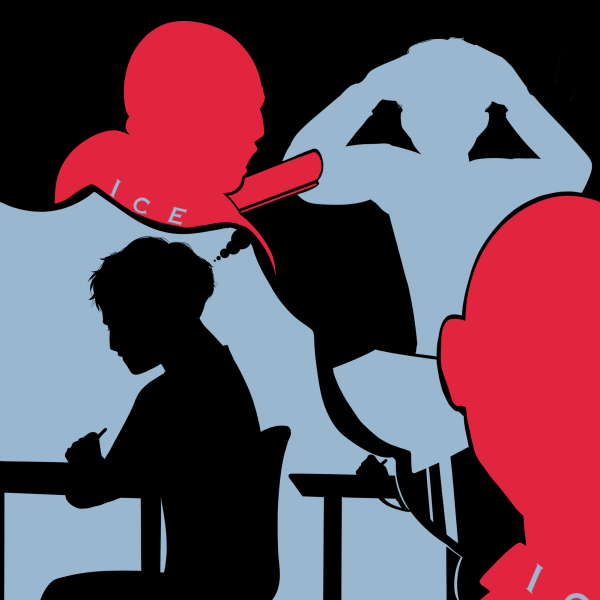Survey results show uncertainty of having school resource officers on campus
On December 15 at 7 p.m., the school board is to vote on whether or not school resource officers will be apart of Columbia Heights Public Schools through 2021. They drew their conclusions, in part, from a focus group and from a survey open to students in grades 7-12, both headed by Executive Director of Educational Services, Bondo Nyembwe.
For some time now, Columbia Heights High School (CHHS) has had the privilege of having in-school resource officer Jason Piehn (otherwise known as JP), who would, before the pandemic, randomly pop into classrooms, fist bump kids on their way out of the building and provide a lending hand to those in need. He has had the opportunity to build unique relationships with the students here at CHHS since 2015. Officer JP is not your average school resource officer (or SRO), though. Following multiple events that have happened both in Minnesota and elsewhere in the United States this year, the question of the necessity of his position has risen.
After the police killing of George Floyd and the resulting protests in early summer, people across the country have taken a step back to reflect on the role of police officers within their communities, with schools following suit. This especially hits close to home, with the site of George Floyd’s death by the hands of Minneapolis law enforcement being a mere 20 minutes away from Columbia Heights.
Columbia Heights Public Schools (CHPS) has had a strong relationship with the Columbia Heights Police Department (CHPD) for years on end. From as early as fourth grade, officers come into the three elementary schools to teach children about substance and drug use through the nationwide D.A.R.E. (Drug Abuse Resistance Education) program. Strongly embedded into both Columbia Academy and CHHS is the Open Gym program, dedicating a weekday to opening a gym for students after school to play basketball, watch a movie or do homework while being supervised by CHPD officers. And even as a non-participating high schooler, within the mandatory Health 10 class, you are bound to see the School Resource Officer make an appearance.
“Officer JP is a great resource for our students and staff,” CHHS Principal Dan Wrobleski said. “He is great at creating relationships with all who belong at CHHS. He is an asset [when it comes to] recovering belongings and defusing high emotion situations that can easily escalate into bad situations. He is always willing to go the extra mile to keep our school safe.”
Despite the account of the principal, the CHPS School Board is seemingly divided on whether or not to continue having SROs for the district’s middle and high school. This split is especially crucial for parents and students to observe, as it holds the future of the school district’s relationship with the CHPD. While the vote will officially take place at tonight’s board meeting, the discussion amongst the board at recent meetings thus far has considered a variety of viewpoints both in favor and against renewing the SRO contract with CHPD, and the importance of their vote.
“I’m thinking about in education how we make decisions for kids because they’re good for them, even if they don’t know it,” school board member Hala Asamarai said during the November 24 School Board Meeting. “Even if a certain number of students want to have SROs, is that good for [them]? It is our job to do what we believe is right and to vote our conscience; we don’t survey kids on every decision we make, we have to make decisions for them.”
John Larkin, whose term from the board is ending in January, is being replaced by the recently-elected Mary Granlund, a very strong advocate against having SRO’s in Columbia Heights Public Schools.
“The New York Times did an article this June about SROs in schools,” Granlund said. “They discussed that there’s a wealth of research that suggests that SROs don’t reduce crime as much as we’d hope and that there may be a lot of negatives for students, especially students of color. And for me, that’s really important. We shouldn’t be asking ‘how can we make students be okay with police in our schools?’; we need to be asking, ‘how can we make our schools feel safer without having police in them?’”
The school board is looking to vote on the continuation of an SRO contract with CHPD a mere three weeks from Larkin leaving the board. On January 4, 2021, when Granlund is to be inducted, the dynamic between those that are pro- and anti-SRO may shift. We also have to take into consideration that the school board is composed up of nearly all white people. They may not see the consequences having an SRO can have on people of color (including a potential decline in graduation rates), which is dangerous considering that 84.1% of students in Columbia Heights are young people of color.
The school board initially interviewed and surveyed 14 students (that responded out of a group of 40 contacted) to help them reach their decision: six Black students, six white students, one Hispanic student and an Asian student. Anyone who has walked through one of the five schools in our district knows that we are a district who prides itself on its diversity. These numbers do not accurately represent the race breakdown of any of our schools. Only 57% students of color were interviewed and surveyed initially.
Since then, though, the district administration has released a survey by recommendation of the school board, open to students of CHPS in grades 7-12, asking about their preference and with whom to replace police officers if the district was to replace them. The survey garnered 612 responses, heavily answered by middle schoolers. 53.6% of all students were in favor of SROs continuing to be a part of CHPS, 4.9% were against and the remaining 41.6% were unsure how they felt about one.
Within the survey, nearly the same amount of Black students said that they’d either prefer to have SROs that were unsure. And Hispanic students were the biggest group in favor of SROs, as 56.3% of those who participated said yes, according to results reported by Executive Director of Educational Services Bondo Nyembwe. White students were the biggest group who were opposed to having SROs, with about 12.5% responding that they do not belong in schools. Multi-racial people, unexpectedly, had the lowest percentage of students respond no.
“Tolerance of law-enforcement becomes a regular thing students of color are subjected to instead of asking questions, having a discussion or an overall safe place to talk to a guidance counselor or therapist about law-enforcement,” Hannan Endeshaw (11) said. “We need to listen to our student body and consider their mental health, home life, and experiences before we even consider having an officer present.”
The overall use for an SRO is very limited within our schools. They only have a couple events throughout the year where they are actively needed, and they may make students of color uncomfortable. Knowing that you could get profiled or even shot for your skin tone within your own school and not receive justice is a terrifying thought, as a Black-identifying person of color. The events that have happened this year are not anything new to the Black community and are very traumatic to many.
It also needs to be acknowledged that not every officer is going to be as angelic as Officer JP is. Who is to say that the SRO the district would hire for CHHS would be JP in any future scenario? The school district has already had to remove an officer from a building before; what makes anyone think that it will not happen again? About ⅛ of CHHS students within the survey said that they feel unsafe around JP. Whether or not they were envisioning JP himself or police officers in general when coming to this conclusion is a question only they can answer.
Instead of investing money into an officer who we’d rarely see—regardless of whether or not the Heights at Home model continues—the school board could faucet the money into hiring someone else that is far more needed during this troubling times, like school psychiatrists, social workers (a position that is currently unfilled at CHHS, by the way) or even unarmed private security guards.
The alarming 41% of all kids who responded with “unsure” in the survey should not be overlooked. At what point should students, especially of color, remain compliant in having officers around. I’d much rather have my fellow students of color feel safe rather than feel like their lives are endangered by someone otherwise revered by society. When the school board casts their votes, it is crucial that they look at school resource officers from a different perspective than their own, creating a comfortable environment for all of us.

Kwot Anwey is a Senior at Columbia Heights High School and she is currently the Co-Editor-in-Chief of the Heights Herald. She enjoys journalism because...

Sol Schindler is a senior at CHHS and is the A&E Editor and lead cartoonist of The Heights Herald. He is in the National Honors Society, Student Council,...







